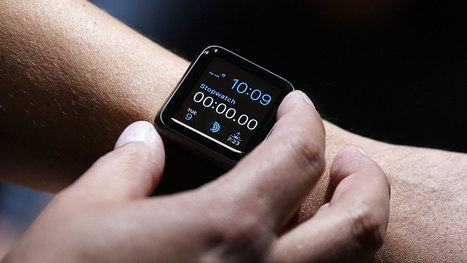But the more time patients spend getting their treatment from digital doctors on a screen, the more important the mass of medical data generated becomes.
Get Started for FREE
Sign up with Facebook Sign up with X
I don't have a Facebook or a X account
 Your new post is loading... Your new post is loading...
 Your new post is loading... Your new post is loading...

ET Russell's curator insight,
December 3, 2014 3:00 PM
I particular liked the acknowledgement that there is a need for integrated and coordinated healthcare. 'Help caregivers work more as a team: 79% of physicians and close to 50% of consumers believe using mobile devices can help physicians better coordinate care.'
Everyone one has a role to play from the patient, caregiver, physician community and support groups. So how can we harness this concept and put it into action?

Emma Sands's curator insight,
December 4, 2014 2:55 AM
The current target for wearables is the same as for gyms and sports clubs - this leads to stats as commented in the article: "Less than half of people who own a wearable use it on a daily basis". Currently wearables are being treated as "add-on" to a healthy lifestyle, but form no real part of it. We need them to become "add-ins" (to coin a phrase), an integral part of health management within the home - the active-patient paradigm. 
David Greene's curator insight,
December 5, 2014 12:33 PM
With the advent of all this wonderful technology we can't lose sight of initiating the care without assessing the patient's desire to participate... Becoming partners in care seems to be the most effective way to help the chronically ill... |

ET Russell's curator insight,
August 2, 2013 3:03 AM
Dr. Nick van Terheyden, is CMIO at Nuance offers his thoughts on the hospital of the future and the top three transformations that will drive the next generation of patient-centric care. 1- Technology that works for physicians vs against them. 2. The consumerisation of health care 3. Fewer patients waiting in the hospital
Includes reference to sense.ly [An avatar-based telehealth platform that enables continuity of care for chronic diseases, leading to improved patient outcomes and reduced costs.] 
eMedToday's curator insight,
August 2, 2013 9:06 PM
Key point
Part of this movement to shift responsibility to the patient means hospitals, which have for years measured financial success based on the number of filled beds, will have to adjust to a new health care system that values empty beds and healthier patients. |

















